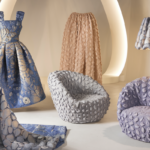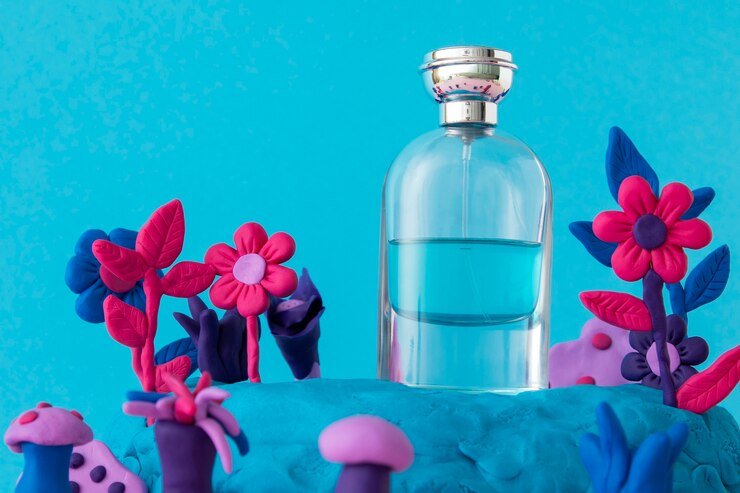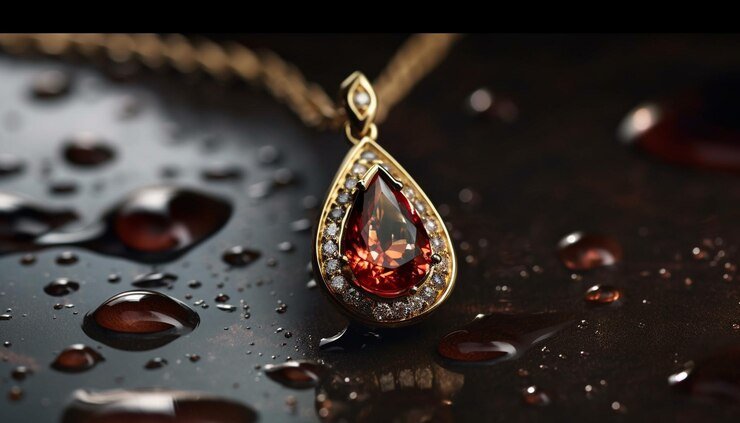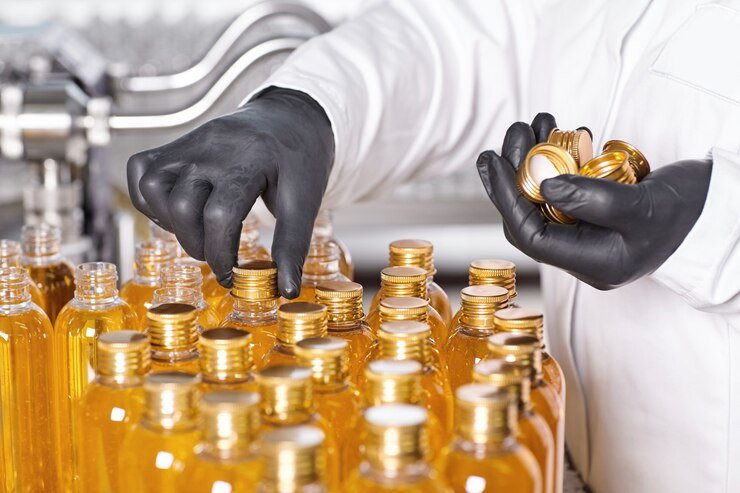1. Introduction to Eau de Toilette
Eau de Toilette (EDT) is a term that many people encounter when exploring the world of fragrances. Often positioned between Eau de Cologne and Eau de Parfum in terms of concentration, Eau de Toilette is a popular choice for both men and women. But what exactly is Eau de Toilette, and what makes it unique? This article delves into the details of this fragrance type, shedding light on its composition, uses, and how it compares to other types of perfumes.
2. History and Origin
The term “Eau de Toilette” comes from the French word “toilette,” which originally referred to the process of washing or grooming. Historically, Eau de Toilette was part of a morning routine, where it was applied after washing and before dressing. The origins of Eau de Toilette date back to the 14th century, with roots in the early development of personal fragrances. Over time, it evolved into a lighter, refreshing fragrance option that was more accessible and versatile than the more intense perfumes used by the upper classes.
3. Composition of Eau de Toilette
Eau de Toilette is composed of a mixture of perfume oils, alcohol, and water. The concentration of perfume oils in EDT typically ranges between 5% to 15%, which is lower than that found in Eau de Parfum (EDP) but higher than in Eau de Cologne. The alcohol content in Eau de Toilette helps disperse the fragrance and contributes to its lighter scent profile. The balance of ingredients in Eau de Toilette makes it a refreshing and less overpowering option for everyday wear.
4. How Eau de Toilette Differs from Other Fragrances
Understanding how Eau de Toilette differs from other types of fragrances is essential for making the right choice:
- Eau de Parfum (EDP): Contains a higher concentration of perfume oils (15% to 20%) and lasts longer on the skin, often offering a more intense and lingering scent.
- Eau de Cologne: Features a much lower concentration of perfume oils (2% to 5%) and has a very light, fleeting scent, making it ideal for a quick refresh.
- Perfume (Parfum): The most concentrated form, with 20% to 30% perfume oils, offering a rich and long-lasting fragrance that can last throughout the day.
Eau de Toilette, with its moderate concentration, strikes a balance between longevity and lightness, making it versatile and suitable for daily use.
5. Longevity and Sillage
One of the defining characteristics of Eau de Toilette is its longevity and sillage (the trail of scent left behind). Due to its lower concentration of perfume oils, EDT typically lasts between 3 to 5 hours on the skin. The sillage of Eau de Toilette is generally moderate, meaning it projects a noticeable scent without being overpowering. Factors such as skin type, climate, and the specific fragrance composition can affect how long an Eau de Toilette lasts and how far its scent carries.
6. Choosing the Right Eau de Toilette
Selecting the right Eau de Toilette involves considering several factors:
- Occasion: EDT is ideal for daytime wear, casual settings, or professional environments where a lighter scent is preferred.
- Season: Lighter, citrusy or floral EDTs are perfect for spring and summer, while richer, spicier versions can be more suitable for fall and winter.
- Personal Preference: Your own scent preferences will guide you towards specific fragrance families, whether you prefer woody, floral, fruity, or spicy notes.
Experimenting with different scents can help you find the perfect Eau de Toilette that matches your style and the occasion.
7. How to Apply Eau de Toilette
Applying Eau de Toilette effectively can enhance its longevity and scent:
- Pulse Points: Apply EDT to pulse points such as the wrists, neck, and behind the ears. These areas emit heat, which helps to diffuse the fragrance throughout the day.
- Spray from a Distance: Hold the bottle about 6 inches away from the skin to ensure even distribution.
- Don’t Rub: Avoid rubbing the fragrance into your skin, as this can break down the scent molecules and reduce the fragrance’s longevity.
- Layering: For a longer-lasting scent, consider layering your Eau de Toilette with matching body lotion or deodorant from the same fragrance line.
Proper application ensures that you get the most out of your Eau de Toilette and enjoy its fragrance for longer.
8. Popular Eau de Toilette Scents
Over the years, certain Eau de Toilette fragrances have become iconic, favored by many for their unique scent profiles. Some of the most popular include:
- Chanel Bleu de Chanel: A fresh, woody fragrance for men with notes of citrus, amber, and cedar.
- Dior Sauvage: Known for its bold, spicy scent, combining pepper, bergamot, and amber.
- Dolce & Gabbana Light Blue: A refreshing, fruity floral fragrance for women with notes of Sicilian lemon, apple, and cedarwood.
- CK One by Calvin Klein: A unisex fragrance with a crisp, clean scent featuring notes of papaya, lemon, and pineapple.
These fragrances have stood the test of time and remain popular choices for those who appreciate the balance and versatility of Eau de Toilette.
9. Eau de Toilette for Men vs Women
While many fragrances are marketed specifically towards men or women, the differences often lie in the composition and marketing rather than the essential nature of the fragrance.
- Men’s Eau de Toilette: Typically features more woody, spicy, and fresh notes, such as cedar, sandalwood, vetiver, and citrus.
- Women’s Eau de Toilette: Often includes floral, fruity, and sweet notes like jasmine, rose, vanilla, and peach.
However, the rise of unisex fragrances blurs these traditional distinctions, allowing anyone to choose a scent based on preference rather than gender.
10. Advantages of Eau de Toilette
Eau de Toilette offers several benefits that make it a popular choice:
- Affordability: Typically less expensive than Eau de Parfum or Perfume, making it accessible for daily use.
- Versatility: Light enough for casual and professional settings but can be layered for more impact.
- Freshness: Provides a refreshing scent without being overpowering, perfect for hot weather or everyday wear.
These advantages make Eau de Toilette a staple in many fragrance collections.
11. Disadvantages of Eau de Toilette
Despite its benefits, Eau de Toilette also has some drawbacks:
- Less Longevity: Due to its lower concentration of perfume oils, it requires more frequent reapplication throughout the day.
- Less Intensity: May not provide the deep, long-lasting scent that some prefer in more concentrated fragrances.
- Potential for Over-Application: Because it is lighter, there’s a temptation to apply more, which can sometimes lead to wastage or overwhelming scent.
Weighing these factors against your needs can help you decide if Eau de Toilette is the right choice for you.
12. How to Store Eau de Toilette
Proper storage of Eau de Toilette is crucial to preserving its scent:
- Keep Away from Light and Heat: Store in a cool, dark place to prevent the fragrance from degrading.
- Avoid Humidity: Keep your Eau de Toilette away from high-humidity areas like bathrooms, as moisture can affect its composition.
- Tighten the Cap: Ensure the cap is tightly sealed after each use to prevent evaporation and preserve the fragrance.
By following these storage tips, you can extend the life of your Eau de Toilette and maintain its quality.
13. Understanding Fragrance Notes
Eau de Toilette, like all fragrances, is composed of different “notes” that develop over time:
- Top Notes: The initial, light scents that you smell immediately after application, which last for about 15-30 minutes. Common top notes include citrus, light fruits, and fresh herbs.
- Middle (Heart) Notes: The core of the fragrance, emerging as the top notes fade. These usually last for a few hours and include floral, spicy, or fruity elements.
- Base Notes: The final, long-lasting notes that develop as the fragrance dries down. These can last for several hours and often include deep, rich scents like wood, musk, or vanilla.
Understanding these notes helps you appreciate the complexity of Eau de Toilette and choose scents that develop in a way that appeals to you.
14. Eau de Toilette in Different Cultures
Fragrance preferences can vary significantly across different cultures, influencing the popularity of Eau de Toilette in various regions. For example:
- Europe: Eau de Toilette is widely used, with a preference for both classic and modern scents that balance tradition with innovation.
- Middle East: Fragrances with richer, spicier notes are often preferred, with Eau de Parfum and attars being more popular.
- Asia: Lighter, fresher scents are favored, aligning well with the characteristics of Eau de Toilette.
These cultural preferences shape the fragrance industry and the availability of certain Eau de Toilette scents in different markets.
15. Frequently Asked Questions (FAQs)
- What does “Eau de Toilette” mean?
- “Eau de Toilette” is a French term that translates to “toilet water,” referring to a light fragrance used as part of a grooming routine.
- How long does Eau de Toilette last?
- Eau de Toilette typically lasts between 3 to 5 hours, depending on the concentration and the individual’s skin chemistry.
- Can Eau de Toilette be worn daily?
- Yes, its lighter concentration makes it ideal for daily use, including in professional and casual settings.
- Is Eau de Toilette suitable for both men and women?
- Yes, there are Eau de Toilette options for both men and women, as well as unisex fragrances.
- How is Eau de Toilette different from cologne?
- Eau de Toilette has a higher concentration of perfume oils than cologne, making it longer-lasting and more intense.
- Can Eau de Toilette be layered with other products?
- Yes, layering with body lotions or deodorants from the same fragrance line can enhance its longevity and depth.
16. Environmental and Ethical Considerations
As consumers become more conscious of environmental and ethical issues, the fragrance industry is responding with more sustainable practices. Many brands now offer cruelty-free, vegan, and eco-friendly Eau de Toilette options, using sustainably sourced ingredients and recyclable packaging. Supporting these brands can make your fragrance choice more aligned with your values.
17. Conclusion
Eau de Toilette is a versatile and accessible fragrance option that strikes a balance between intensity and lightness. Its moderate concentration makes it ideal for everyday use, offering a refreshing scent without being overpowering. Whether you’re choosing a fragrance for yourself or as a gift, understanding what Eau de Toilette is and how it fits into the broader world of perfumes can help you make an informed decision. With its rich history, variety of scents, and widespread appeal, Eau de Toilette remains a popular choice for fragrance lovers around the world.











